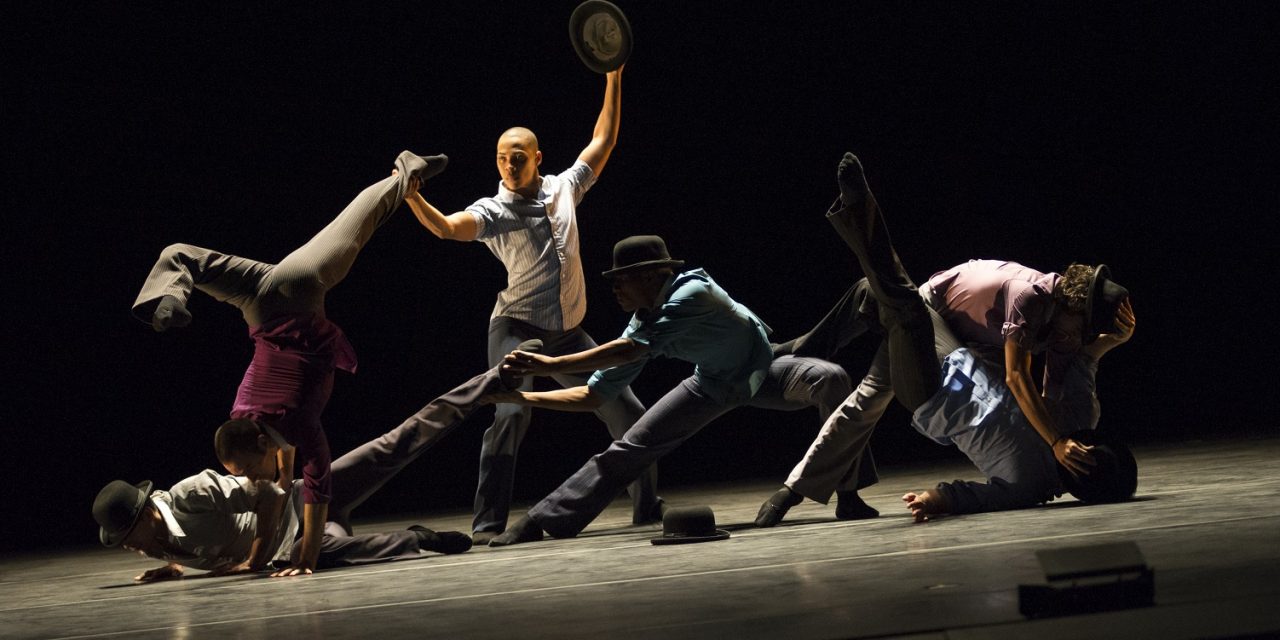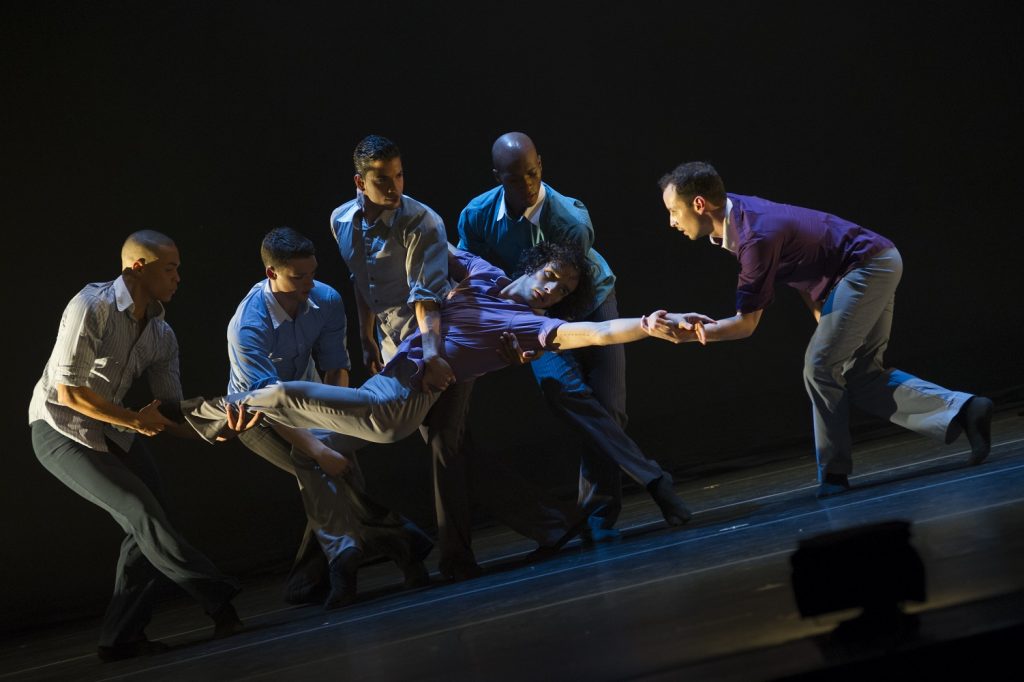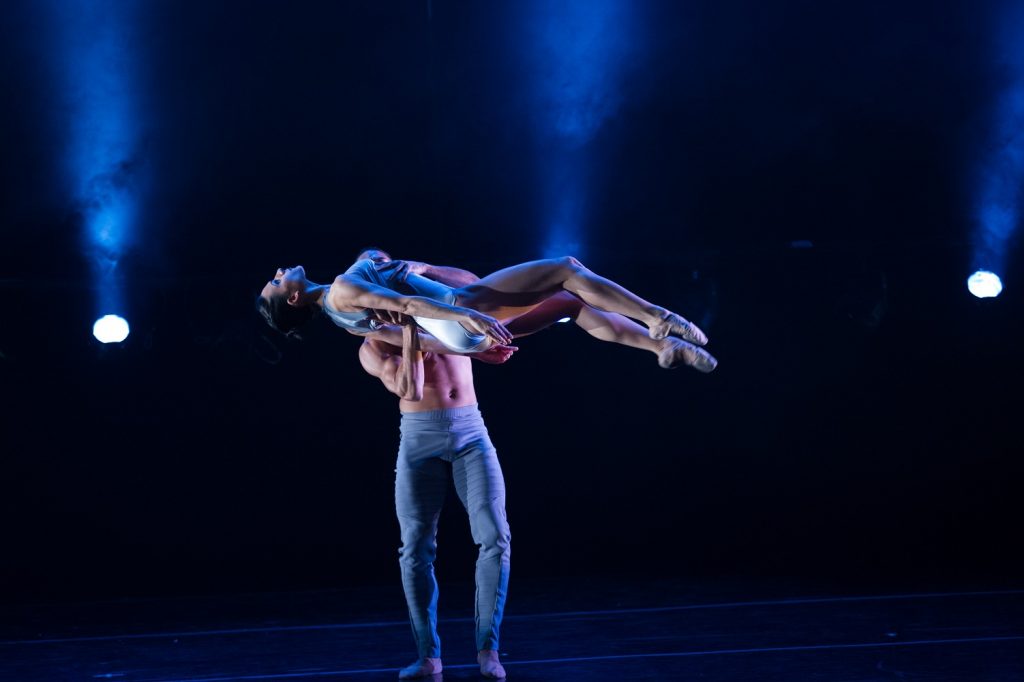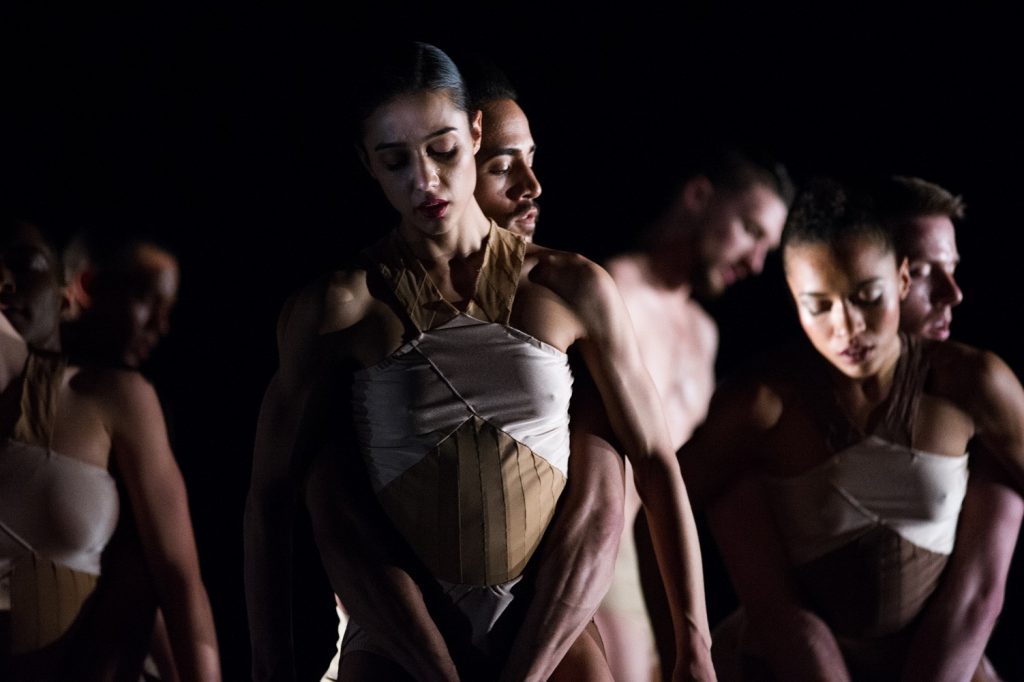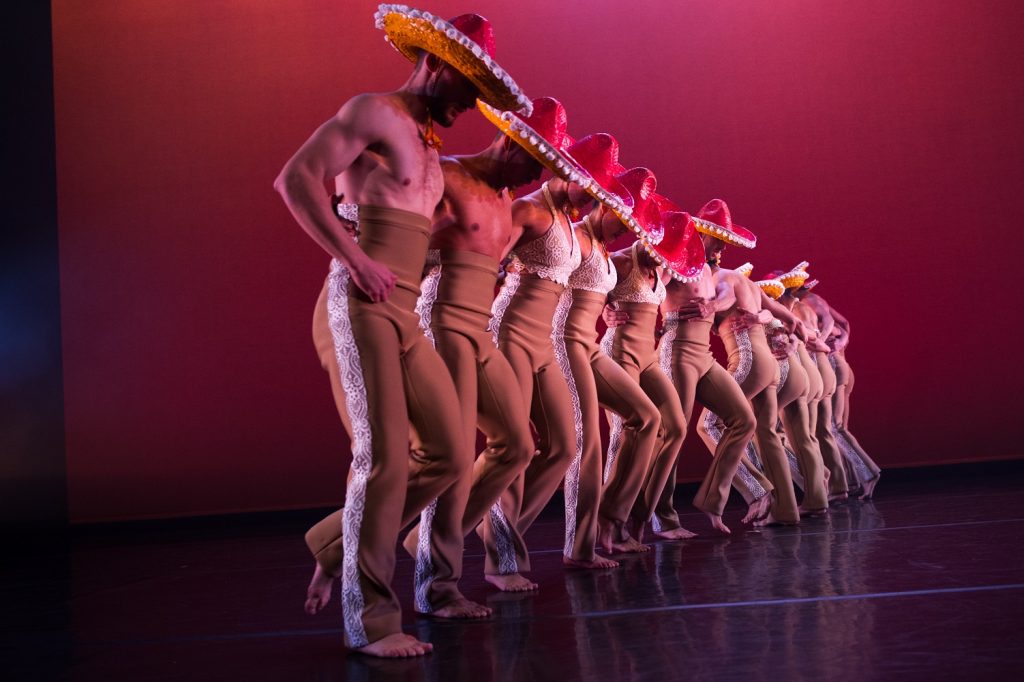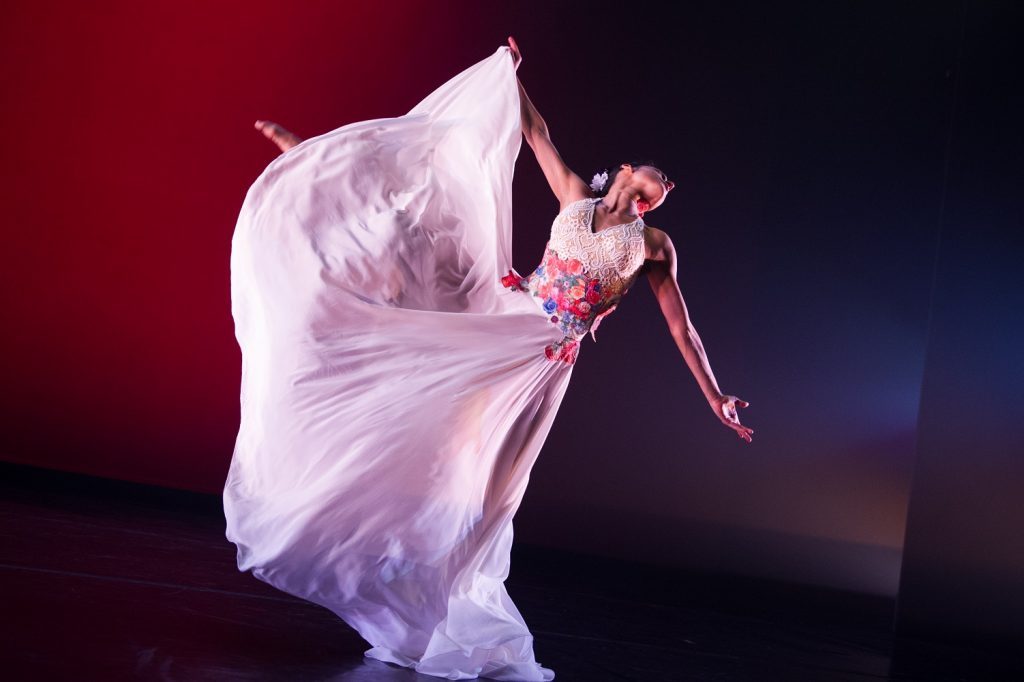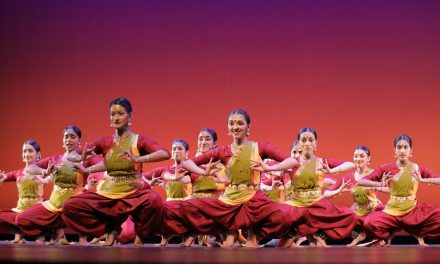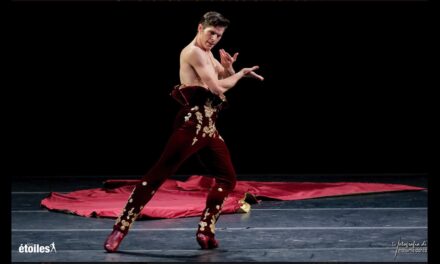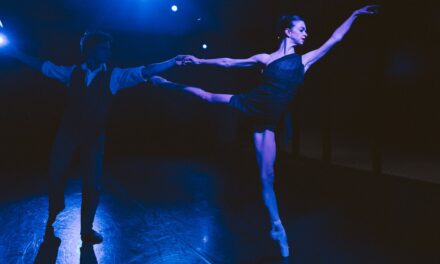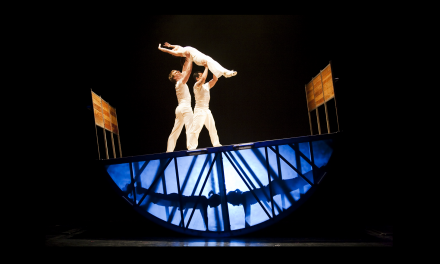Ballet Hispánico hosted by the Luckman Fine Arts Complex on September 29, 2018 was one of the most eclectic and thrilling dance experiences this reviewer has had in some time.
The organization’s founder, National Medal of Arts Recipient, Tina Ramirez sought to give voice to the Hispanic experience and break through stereotypes that plague society in today’s contentious environment.
Carrying on with Ms. Ramirez mission is today’s Artistic Director & CEO, Eduardo Vilaro. This acclaimed choreographer, educator and former member of the company has not only carried on with the original vision, but he’s expanded the aspirations of social equity, cultural identity and quality artistic integrity for all who are lucky enough to experience the wisdom of their Company.
What was evidenced in their brilliant work was the role models the Company aspires to create. The artistic commitment, humor and excitement that makes this an exhilarating evening of theatre dance, and also makes this an important statement of beauty, teamwork, creativity, and intelligence. It truly represents the passion and color of melding cultures through time, through space, mixing Ballet, Contemporary, Salsa, Hip Hop, Contra dances, Folklorico, Western Reels, and Country two step, to only mention a few.
The first jewel of the evening is called “Sombrerisimo,” Choreographed by the immensely talented Annabelle Lopez Ochoa, with Music by Banda Ionica, featuring Macaco el Mono Loco. This Banda folk group focuses on the brass band traditions of Sicily. The roots of the music played by the band can be traced to Holy Week and funeral marches. The banda tradition, updated by Banda Ionica and others, helped to bring operatic and classical music to the rural poor. Sombrerisimo also features Titi Robin with soundscape by various artists.
The remarkable rhythmic and technical prowess of the dancers, Chis Bloom, Jared Bogart, Raul Contreras, Antonio Mannino, Omar Rivéra, Lyvan Verdecia endears them all to us individually and together with their sense of play. And since Lopez-Ochoa finds inspiration in art, it is “An absorbing exploration of identity. Sombrerisimo makes references to the surrealist world of Belgian painter René Magritte, famous for his paintings of men in bowler hats.” And with that she features and seems to encourage each dancer, to expand their humor, talent and expertise. The dancer’s ability to communicate power in a single walking movement, or the playful gymnastics in mid-air, and when the men expertly use each other’s bodies to sculpture momentary forms and harvest unusual and informal structures, we are carried away to a human art gallery. They slyly fall and recover, then back into formation. This causes the audience to audibly gasp not seeming to believe what they just saw. The use of themes and props, trading Magritte-style Bowler hats, making them appear and disappear, flipping and spinning like magicians winding up their tricks, only to return their hats back to their heads like it was all an illusion. That then leads the dancers to break into a salsa desenfrenado.
3. Catorce Dieciséis, is an exquisite integration of the Baroque, Classical, and Romantic period music by Marais, Frescobaldi, Vivaldi, Couperin, and Pergolesi; and is Choreographed by famed Tania Pérez-Salas, born in Mexico City, recognized as both dancer and choreographer. She has been awarded the National and Continental Prizes for Choreography in Mexico, Paris and recognized worldwide. The title is indicative of 3.1416 which equals “Pi” and the essence is explained as “the never ending circular number of Pi …reflective in the work, ” says Melissa Fernandez, one of the Company’s accomplished dancers. The understated, exquisite costuming was designed by Amanda Gladu and the painting with light was the lighting Designer Bob Franklin.
In this piece, the second of three ballets, the spirited, striking and techniquely superb women of the company are brilliantly integrated in the statements, questions and answers of the fugue form: Shelby Colon, Melissa Fernandez, Laura Lopez, Jenna Marie, Geena Pacareu, Gabrielle Sprauve, Eila Valls, and Lyvan Verdecia, some donning grey/white diaphanous dresses, others a bustiers, and/or pants, are joined by their male partners in grey/white tights. They move in and out of the shadows first stating, then re-stating their theme, both individually and in groups. All these statements are done facing upstage and to the back. They finally disappear as they appeared, into darkness and then replaced by three female dancers. They are facing front and walking towards the audience wearing black bustiers and briefs, to the insistent steady music of Marais. Equally insistent is the strength of the three. The first dancer stating the theme, then the second picking it up, and finally the third restating it; all working in angles and circles. The fascinating combination of physical strength and lyrical languorous movements soon disappears to reveal two women in long black gowns to the left and nearly dissolving in the darkness. First, they use both arms in their circular and angular movements, and then as if by magic, two more arms appear around their legs, duplicating the theme with variations. Suddenly the black dresses are whipped off to reveal blood red flowing silk paneled gowns on the two women. Our red ladies then use the variations to create a powerful and fiery pas de deux against the pas de trois in black, who whip, like bullfighters, the black skirts just removed, beating them in a percussive rhythm against the stage floor.
The Fourth Theme is a rich choral piece, made up of walking, kneeling, lying, peeling off a long line of bodies, rolling cross stage alighting onto piles of humanity, arching in prayer-like arcs symbolizing a kind of Pilgrimage of Guadalupe and its spiritual experience. This leads to a stunning pas de deux with a male and female dancer to the gorgeous Pergolesi’s Stabat Mater.
And ending the piece, there is a final clean statement and re-statement of the theme which builds from the tension of the first movement of the piece. The bodies meld together in both percussive and lyrical movements, separating in angles and lifts which take them easily to the floor and air. Picking up the theme and variation in the fugue. It then leads to the final movement with the entire company. The intelligence of this piece is hardly explainable. It needs to be seen to be fully appreciated…even a video only gives a taste of the emotionality, and superb work this presents.
Ballet Hispanico’s third and final piece is “Con Brazos Abiertos,” Choreographed by Michelle Manzanales, with Artistic Collaboration by Ray Doñes and developed by the Ballet Hispánico’s Instituto Coreográfico program. It reveals the choreographer’s exploration between two distinct cultures; the Mexican culture of Manzanales’ parents, and the American culture she grew up with in Texas. She mixes “intertwining folkloric details with a distinctly contemporary voice in dance, set to music that ranges the spectrum of Julio Iglesias, to rock en español.” (Program) She used wonderful traditional dance with the contemporary. The costumes by designer Dinaa Ruettger, and lighting designed by Joshua Preston enhances the message and the look to help sweep the audience along. The use of the Sombreros in the beginning of the piece, hide the faces of the dancers, revealing only their bodies, a compelling message in relation to perhaps the choreographer’s mission and exploration of her own internal need and recognition, or not.
The round Folkloric skirts worn by both male and female dancers fills the stage with joyous and exciting emotion for the audience. At times the men lift women, then women lift men, so the gender-neutral playfulness creates a full stage of delightful color and action.
As this piece moves passionately toward its end, one singular young woman walks quietly through the middle of the divided action towards the audience, appearing to find quiet in her acceptance of her dual blessing of cultural parity as the lights lower on a hopeful finale and an evening of the marvelous, creative and exciting Ballet Hispanico. My hope is that we see more of them throughout the year.
For more information on Ballet Hispánico, click here.
Feature image: Ballet Hispánico in Sombrerísimo – Photo: Paula Lobo

